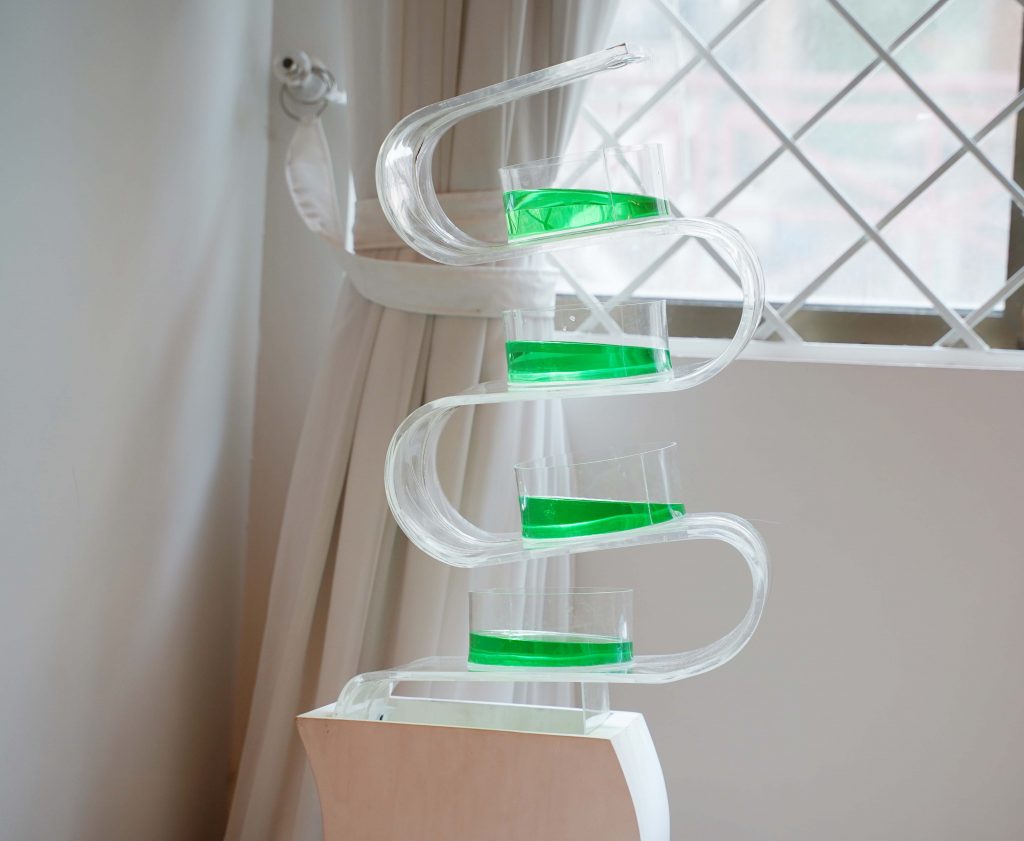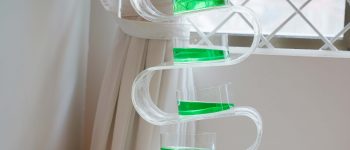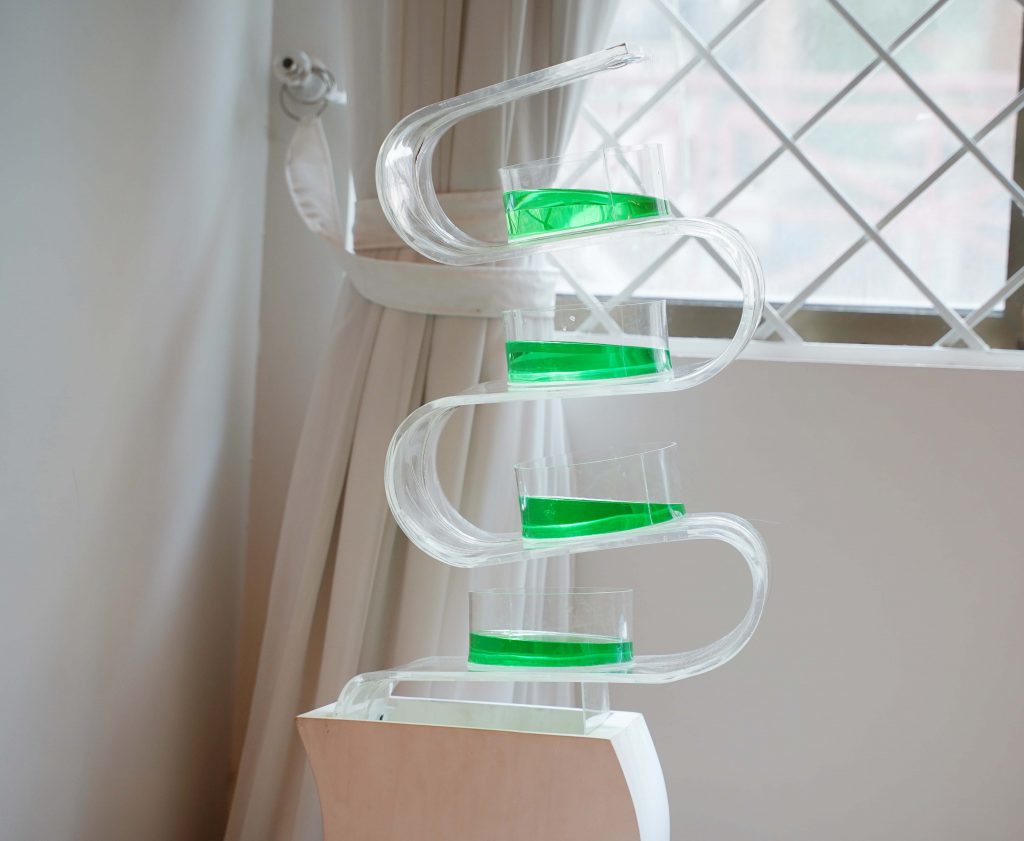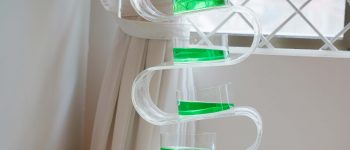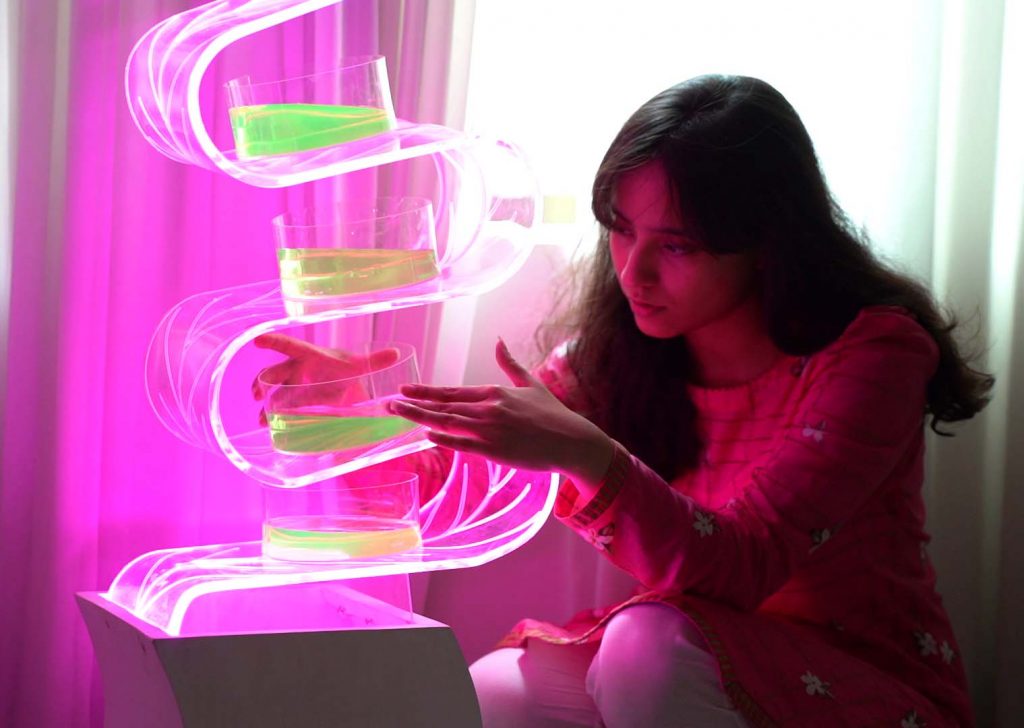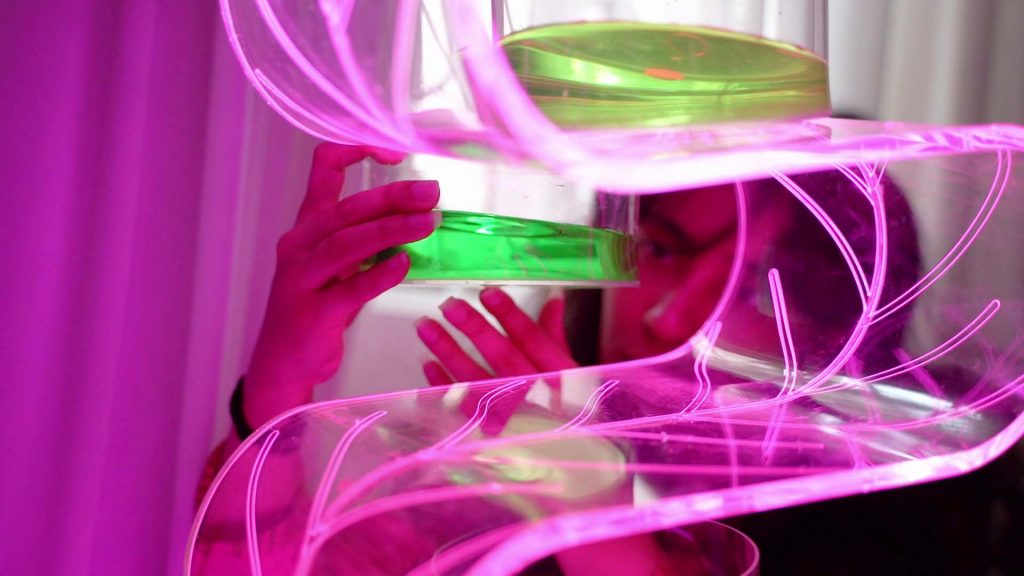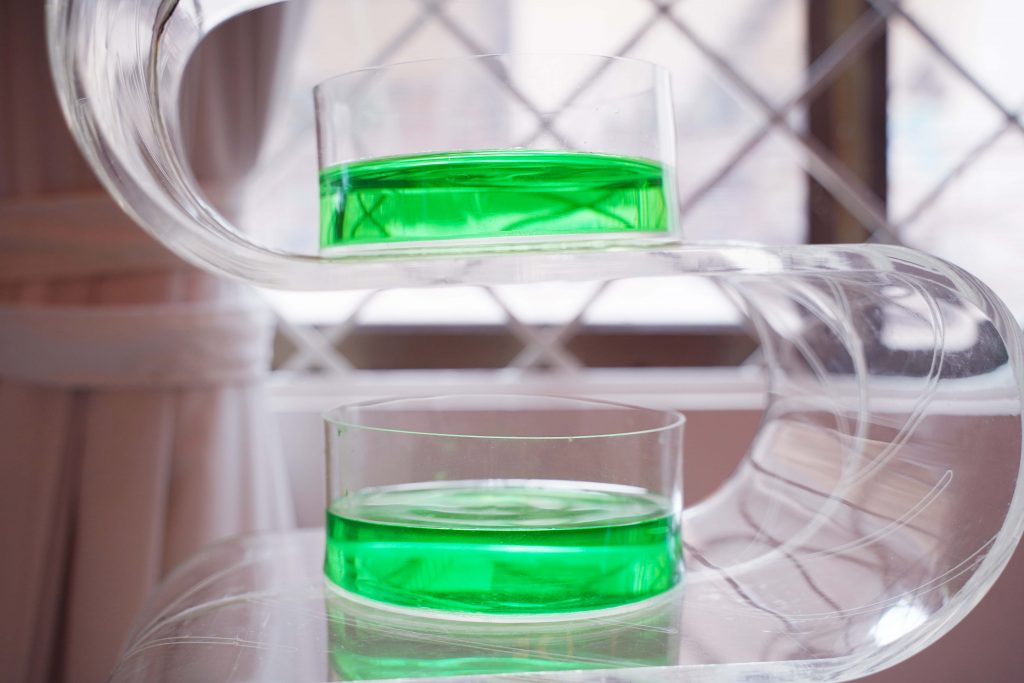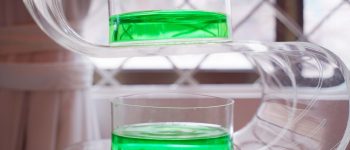This project examines the potential of algae as a carbon dioxide scrubber and talks about the practical implementation of algae cultivation in homes. Spirulina algae absorbs carbon like other algae and plants, and contains five times more protein than meat. It is easy to harvest because it grows in microscopic spirals that tend to stick together. By growing it indoors you can control the conditions and ensure the environment is safe, producing the most organic algae.
‘Algar’ is a vertical domestic algae garden, occupying a square foot of your home, it can cultivate approximately 4L of algae at a time. It acts a sculptural object as well given the leaf pattern engraving. It is fitted with pink light as that is the optimum colour for algae growth and adds an ambient lighting to your room.
Spirulina cells’ corkscrew form enables one to easily filter out the culture through a thin cloth, leaving a thick paste that can be consumed right away.
We often attribute much of the credit for the production of oxygen to trees. However, one of the most overlooked organisms which is responsible for 70% of global oxygen is algae. How can we mitigate carbon emissions at an individual level? By cultivating algae at home we can harness its natural power of absorbing CO2 and releasing oxygen to purify the air. Since agriculture is the second largest greenhouse gas emitter after the energy sector, algae consumption presents a compelling climate solution since it can provide five times more protein than meat for less than 3% of CO2 emissions.

